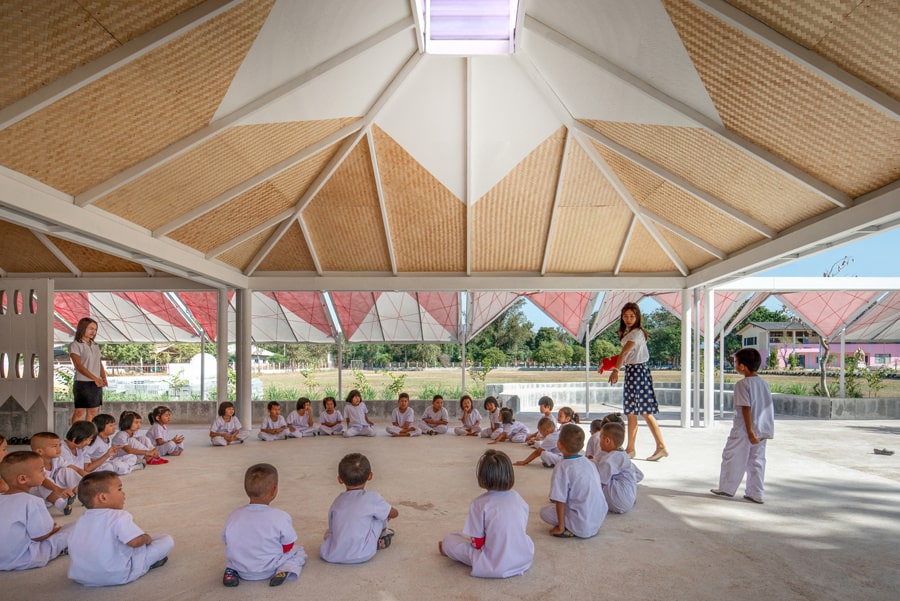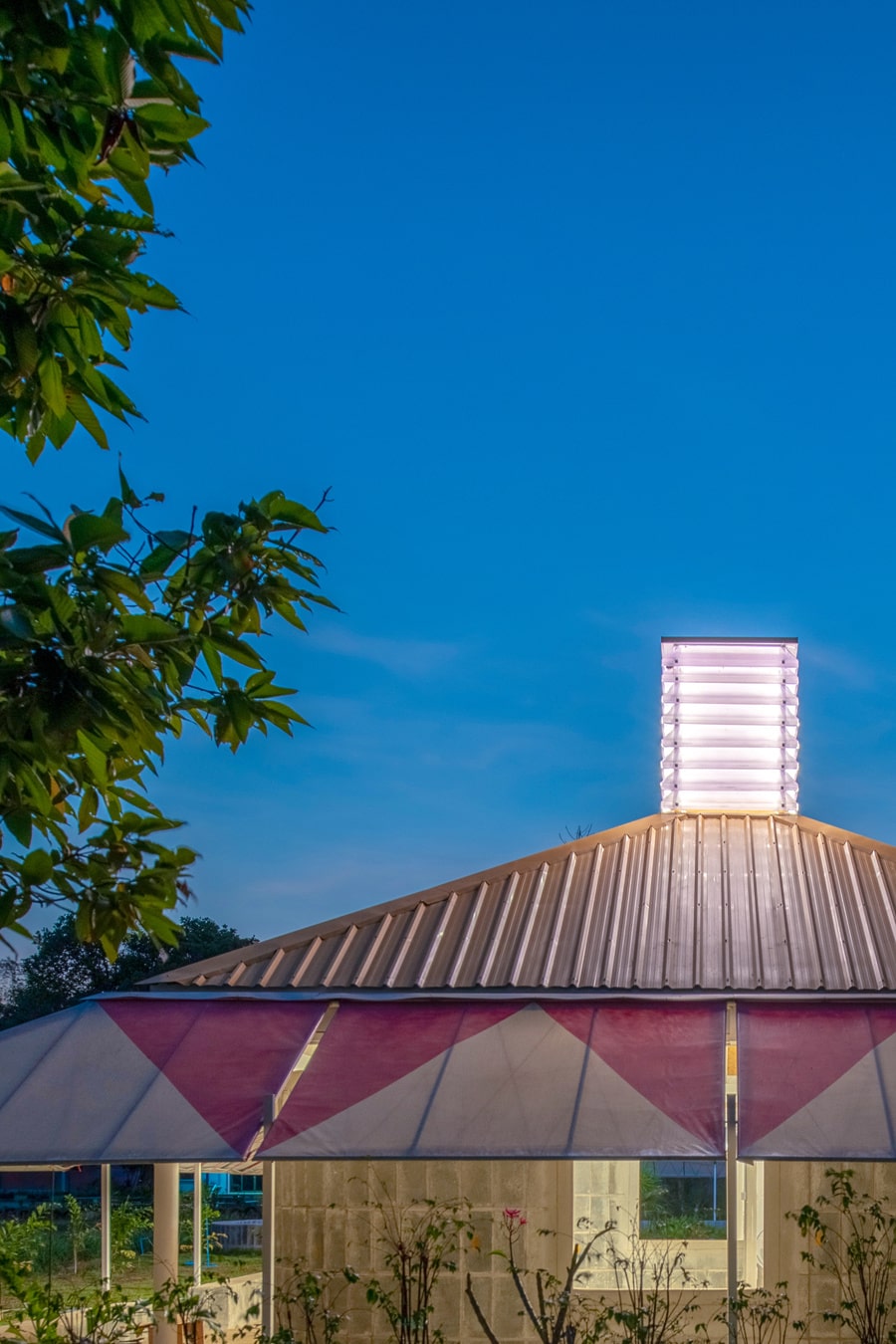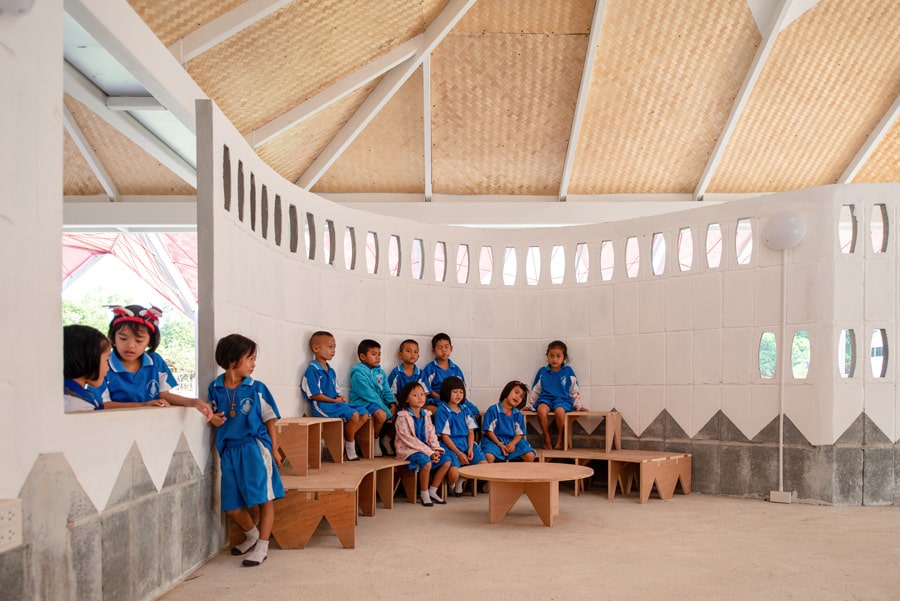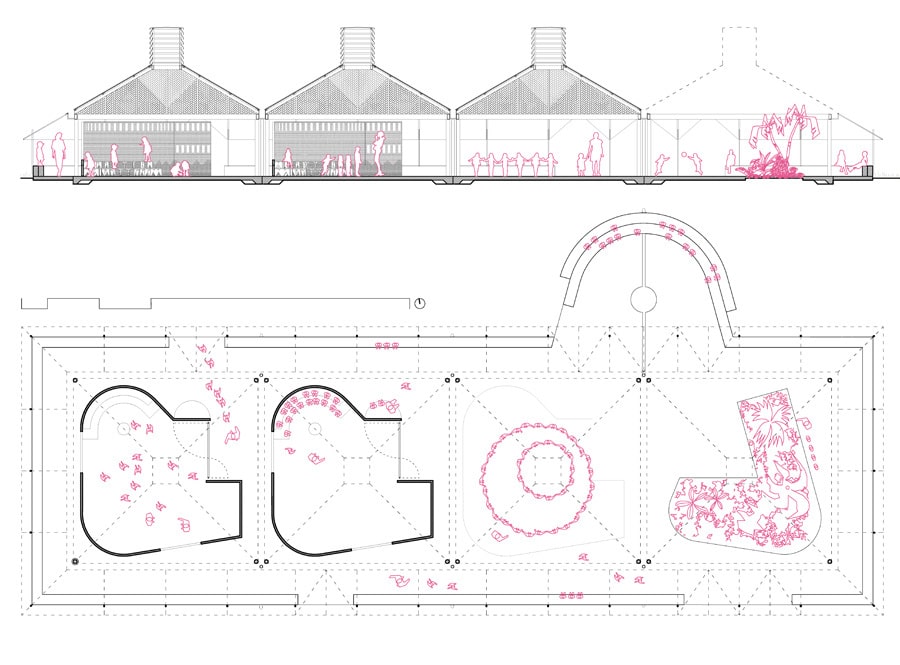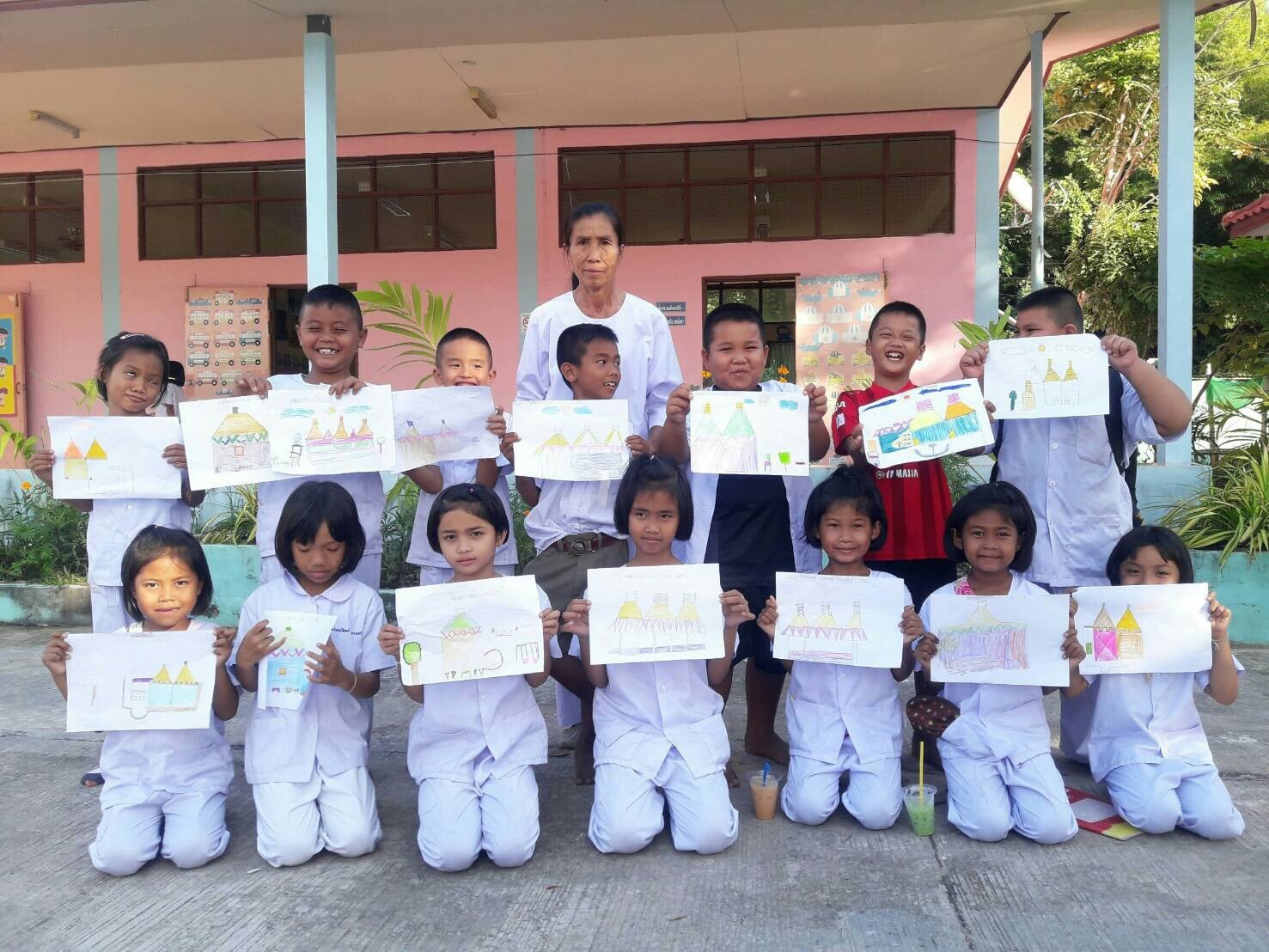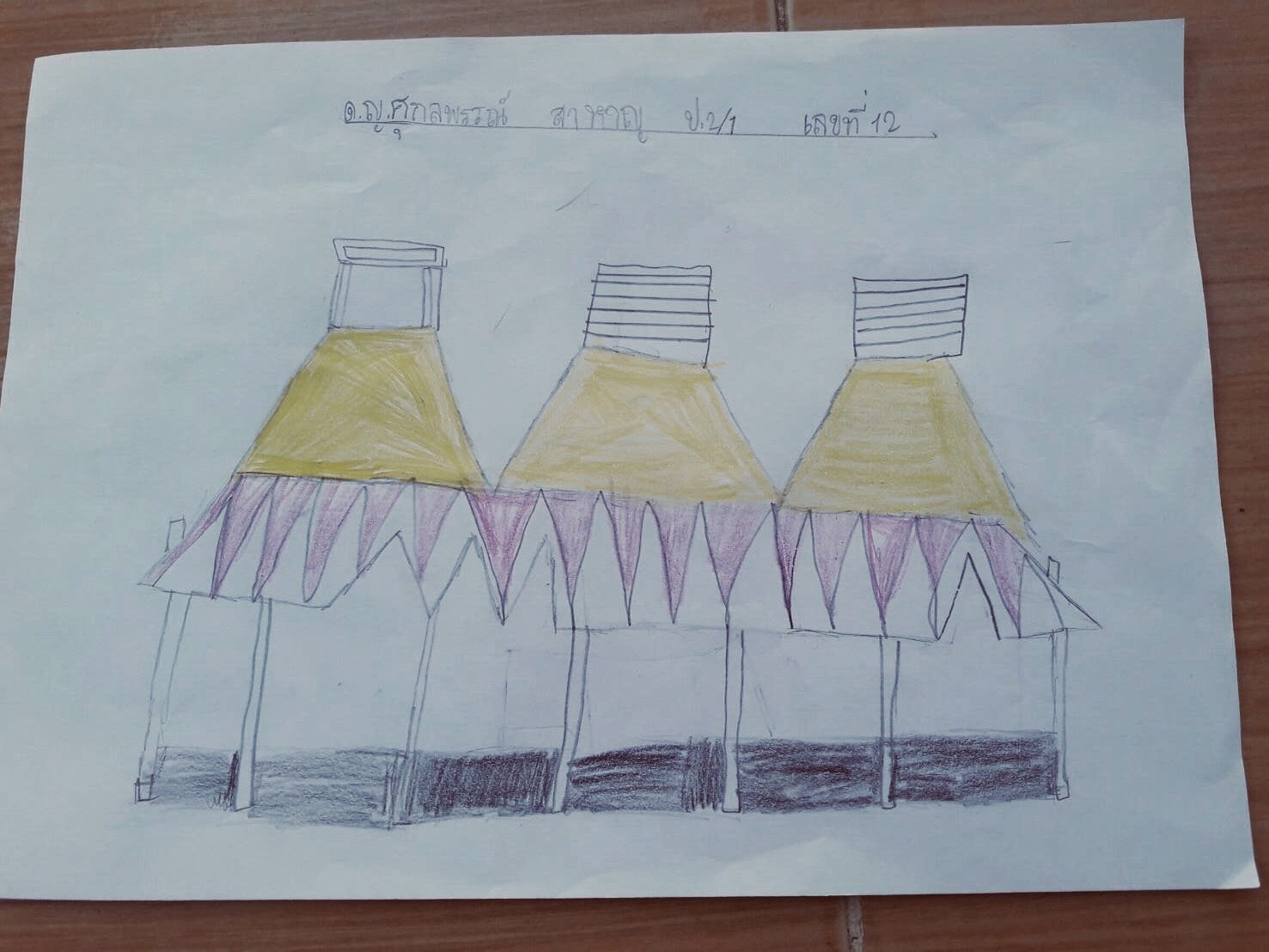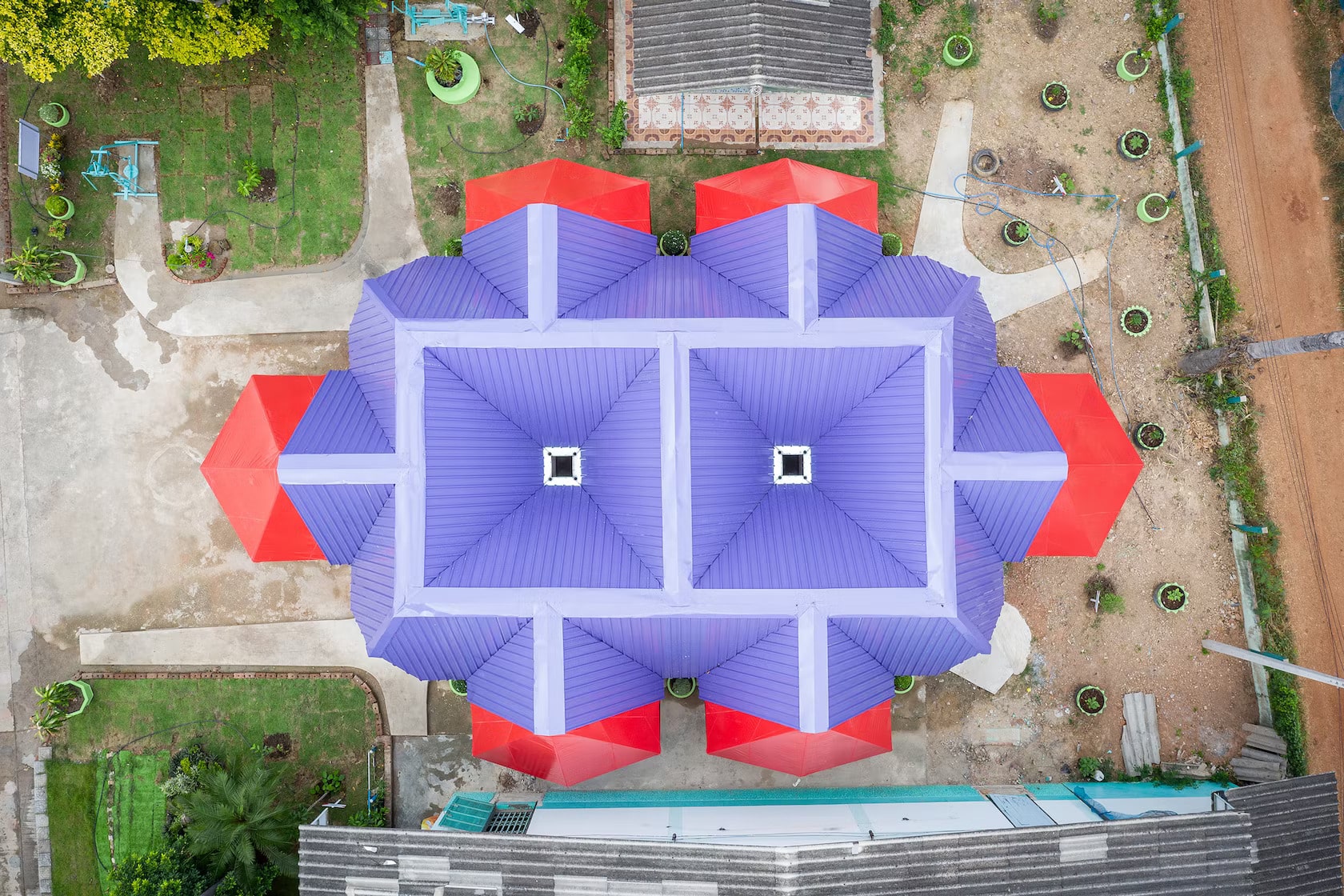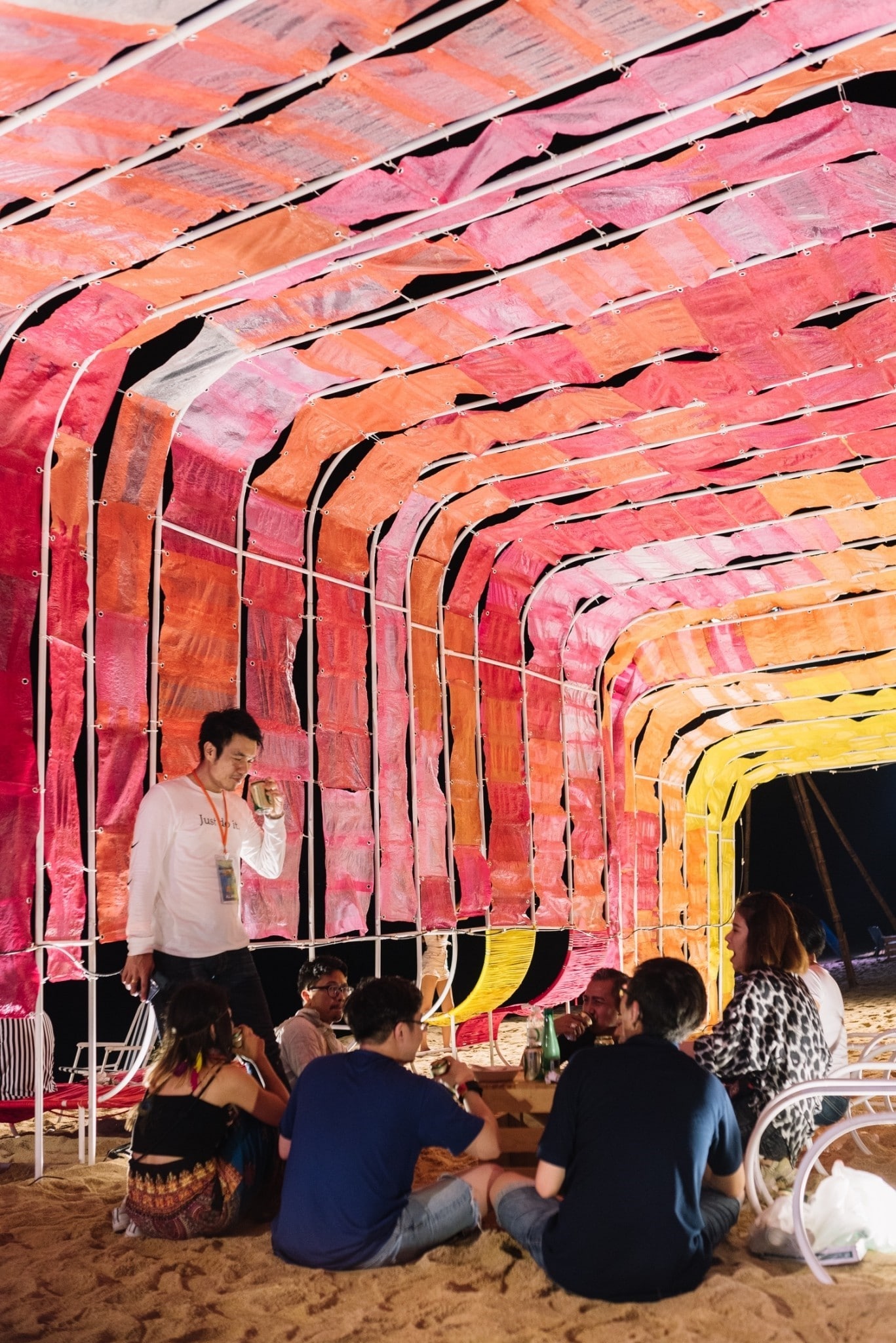This project combined the tenacity of the director of Dum Yai School, the inventiveness of students and instructors, and the resilience of the construction workers into a 300-square-meter kindergarten. The school is located in a 500-person town in eastern Thailand surrounded by rice plantations, and it provides access to proper education as well as quality meeting and playing spaces.
To make this possible, students questioned the brief and the available resources. By clarifying the educational and recreational needs, the group redefined the spatial requirements and expanded the scope from what is commonly requested to what is socially rewarding.
The building uses a modular system that can exist as a partial building and can also grow in the near future. It is composed of four identical roofs, which represents an upgrade from the initial budget constraints.
Rethinking the construction techniques and aesthetics, students reinterpreted the colorful context and the everyday mechanisms of the extended roof and eaves seen in vernacular and endemic architecture. They manufactured a colorful, easy-to-assemble awning system that increases the area of the kindergarten by 50% with minimal added cost. Beyond the required classroom space, this intermediate space is vital to the everyday social and recreational activities at the school.
The kindergarten also employs a passive ventilation system through the use of solar chimneys and uses the tropical climate to its advantage as it blurs the boundaries between interior and exterior.
By living on site during the construction, workers and students fostered an intimate creative environment that encouraged social bonding between people of different classes, generations, and backgrounds. With city students, international instructors, village kids, and rural workers sharing and learning from each other, the process has proven to be just as valuable as the final result.
